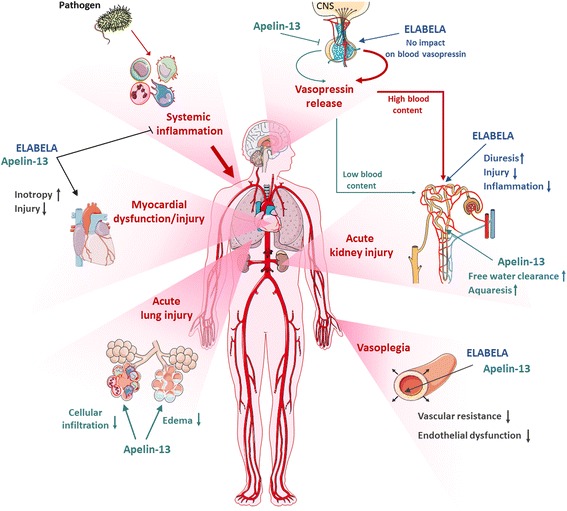Fig. 1.

Potential impacts of modulating the apelinergic system in human septic shock with multi-organ failure (MOF). Acute and continuous infusions of the endogenous apelin receptor (APJ) ligands Apelin-13 (APLN-13) and Eleabela (ELA) display several beneficial effects in preclinical septic shock (i.e., endotoxin and cecal ligation and puncture models) as well as in sepsis-related organ failure. Both APLN-13 and ELA reduce bloodstream and tissue inflammation, improve cardiovascular hemodynamics (e.g., enhanced inotropy, reduced pre- and after-load, as well as vascular permeability) and enhance diuresis. Specifically, APLN-13 and ELA exhibit a differential interplay with the vasopressinergic system and therefore modulate fluid homeostasis. APLN-13 alleviates pituitary AVP release, thus inducing low blood AVP and enhanced aquaresis. In contrast, ELA stimulates diuresis in a pressure- and kidney-dependent manner without modified blood AVP, preserving functional water reabsorption and contributing to enhanced plasma volume. Both APLN-13 and ELA infusions confer tissue protection and contribute to reduced mortality and improved outcomes in experimental septic shock. Inhibition of platelet function has been recently described as a novel property of APLN-13, potentially relevant to septic shock, but not addressed in this perspective. CNS central nervous system
